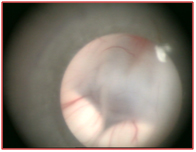




Vijay Kumar
I was diagnosed as having spine tuberculosis. Despite on treatment my back pain persisted and I was unable to walk.
Treatments
Hydrocephalus and Shunt surgery
What is hydrocephalus and what is the prognosis?
Hydrocephalus is excessive accumulation of CSF in the brain.
What are the symptoms ?
- Drowsiness, enlargement of head.
- Headache
- Irritability and/or tiredness
- Loss of coordination or balance
- Nausea and/or vomiting
- Personality changes
- Vision problems
- Seizures
- Swelling or redness along the shunt track
If any of the above symptoms occur, please seek medical attention immediately.
Who is affected?
Hydrocephalus can occur at any age, but is most common in infants and adults age 60 and older. It can affect adult males and females after an injury or illness, as well as people of different races equally.
Symptoms of hydrocephalus?
- Acute hydrocephalus
a) Drowsiness and altered consciousness
b) Headache
c) Nausea and vomiting
d) Unsteadiness
- Subacute or low-pressure hydrocephalus
a) As above symptoms, but slower in onset and more insidious
- Normal pressure hydrocephalus (NPH)
a) Gait disturbances (Difficulty walking)
b) Dementia or forgetfulness
c) Bladder control problems
DIAGNOSIS
Radiologically, hydrocephalus usually presents with dilated or big ventricles as seen in CT scan or MRI.
TREATMENT
Permanent shunt or third ventriculostomy


FOLLOW-UP : Regular followup will be required as shunts tend to get obstructed.




